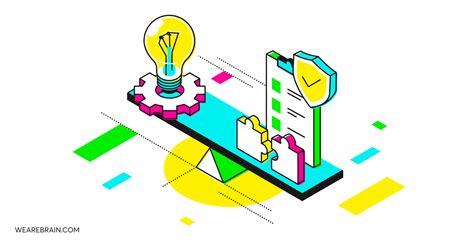AI in Crypto: Balancing Innovation and Regulatory Compliance
The integration of artificial intelligence (AI) into the cryptocurrency market has sparked both excitement and concern among investors, regulators, and experts. With the rapid advancement of AI technology, it is essential to strike a balance between harnessing its innovation potential and ensuring regulatory compliance. In this article, we delve into the complexities of AI in Crypto, exploring how regulations can support or hinder the development of AI-based cryptocurrencies.
The Rise of AI-Powered Cryptocurrencies
AI has been increasingly incorporated into various aspects of cryptocurrency trading, including price prediction, risk management, and portfolio optimization. For example, several AI-based platforms use machine learning algorithms to analyze market data, identify trends, and generate price movement predictions. These platforms can help traders make more informed decisions, potentially leading to greater efficiency and profitability.
Benefits of AI in Cryptocurrency
The potential benefits of AI for the cryptocurrency industry are numerous:
- Improved accuracy: AI-based systems can process large amounts of market data, reducing the need for human analysts and minimizing errors.
- Increased speed: AI algorithms can analyze multiple data points at once, allowing for faster decision-making.
- Improved risk management: AI-based tools can identify potential risks and alert traders to take evasive action.
Regulatory challenges
As AI integration increases in cryptocurrency markets, regulators face significant challenges:
- Lack of clarity on regulatory frameworks

: The rapidly evolving nature of AI technology makes it difficult for governments to establish clear regulations that balance innovation and compliance.
- Bias and Fairness Concerns: AI algorithms can perpetuate existing biases if they are not designed with diversity and inclusion in mind, which raises concerns about fairness and equity in the market.
- Impact on Traditional Financial Services: The rise of AI-powered cryptocurrencies may threaten traditional financial services, such as investment management and asset protection.
Balancing Innovation and Regulation
To address these challenges, regulators can adopt several strategies:
- Set Clear Guidelines: Develop regulatory frameworks that outline the acceptable use of AI in cryptocurrency markets, ensuring compliance with existing regulations.
- Monitoring AI-powered Platforms: Regularly monitor AI-powered platforms to identify potential bias or unfair practices and take swift action to address them.
- Encourage Transparency: Require AI developers and platform operators to disclose their algorithms and data sources, promoting transparency and accountability.
Conclusion
The integration of AI into cryptocurrencies presents both opportunities for innovation and challenges that require regulatory attention. By balancing the benefits of AI-powered cryptocurrencies with regulatory compliance, governments can create an enabling environment for the development of these technologies while minimizing risks. As the cryptocurrency market continues to evolve, it is essential to proactively address these concerns and establish clear guidelines for the responsible use of AI in cryptocurrencies.
Recommended Reading
- “The Impact of AI on Cryptocurrency Markets” by CoinTelegraph
- “Regulating AI in Cryptocurrencies: An Investor’s Guide” by CryptoSlate
- “The Future of AI in Finance: A Regulatory Perspective” by Finextra

